
It’s the holiday season and I want to introduce you to Christmas Tree Worms, members of the Spirobranchus genus. These fascinating multicolored worms are even more spectacular when first seen underwater emerging from a living colony of Porites Coral. Due to their eye-catching appearance, it is easy to admit why it is named the Christmas Tree Worm.

Despite the fact that they are both beautiful and frequent in the aquarium hobby, they surprisingly do not do well in reef establishments. The reason remains unproven but it is for more experienced hobbyists.
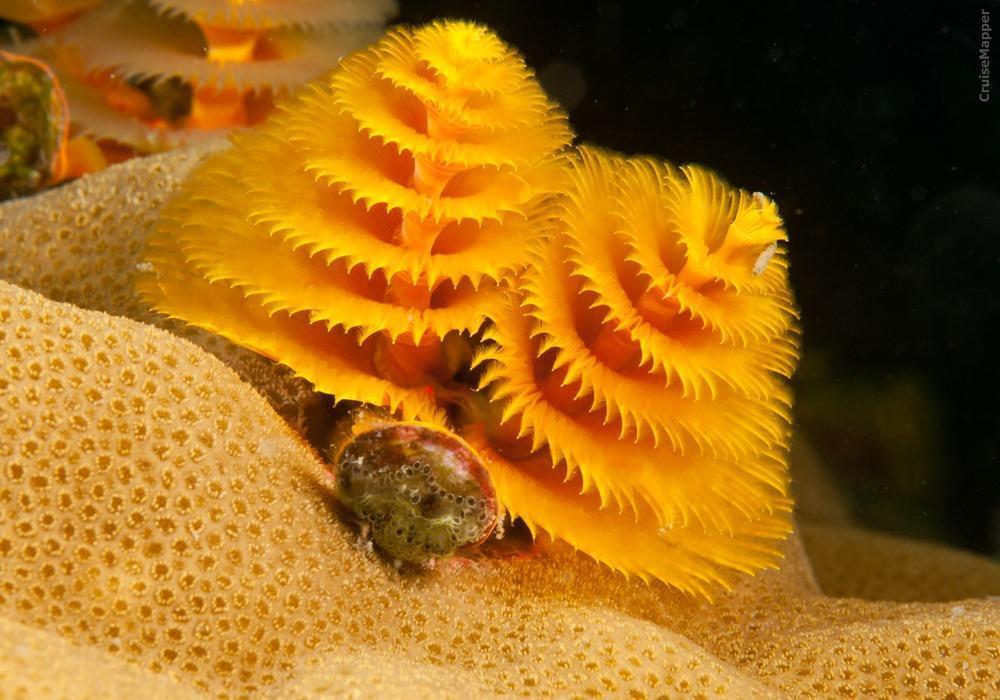
Like other tube-dwelling worms or the more familiar feathered worms, all belong to the genus Polychaetes. Polychaetes is one of three types of worms in the phylum Annelida, also known as roundworms. The other two classes are Oligochaeta known as Earthworms and the second class is Hirudinida the Leeches.
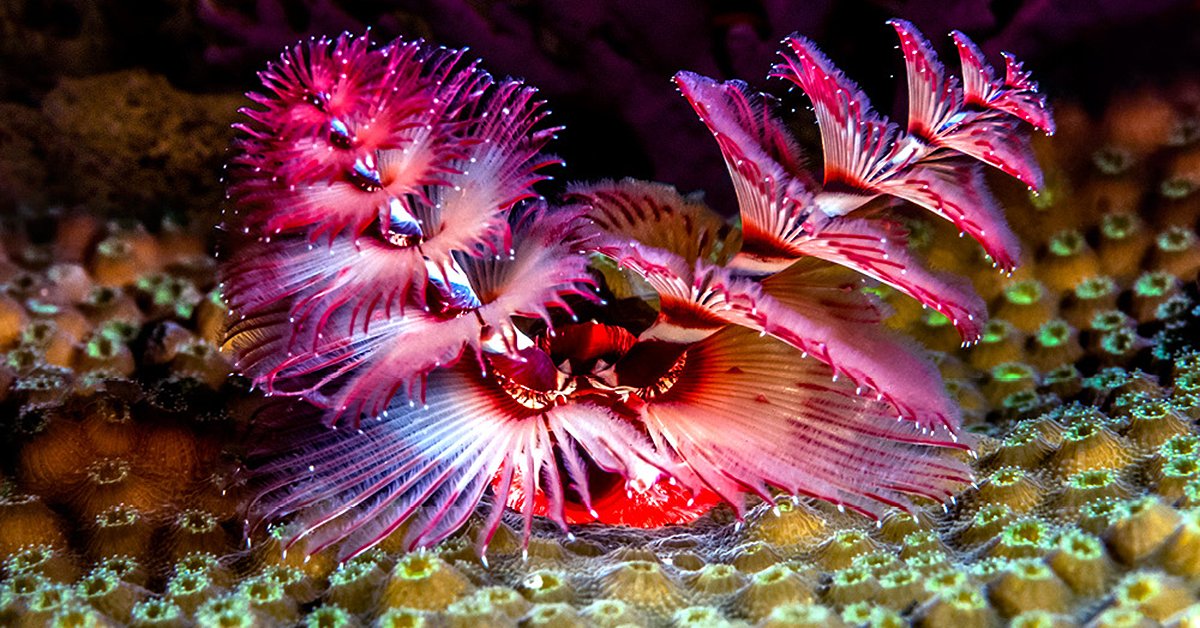
Bristleworms are also Polychaetes species that all fish keepers dislike, due to their negative connotations associated with reef fish farming. Like the terms Bristleworms and feathers, both can have different meanings and descriptions by hobbyists. Polychaetes have a wide range, from free-living in the Bahamas, to the Indo-Pacific, which can be found in the World Register of Marine Species Database.

Now for a bit of biology, the lime tubes of Spirobranchus worms are unsegmented ribbons like worms that vary in length from a fraction of an inch up to 20 feet.
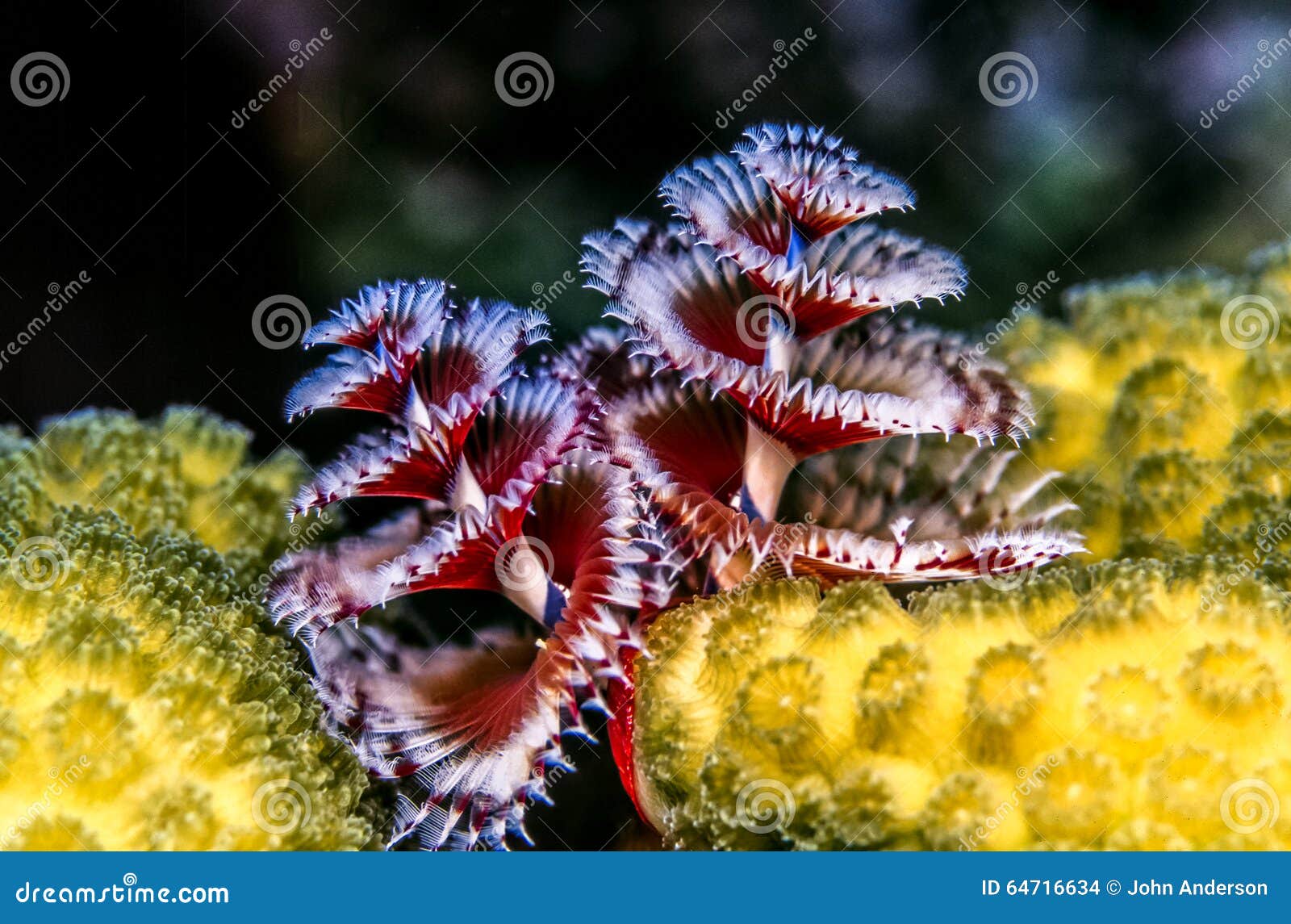
They have a unique feeding method of firing a spiked proboscis arm or duct from a muscular sheath at the front end of their body, which is used to trap prey. The spikes can vary between black and white.
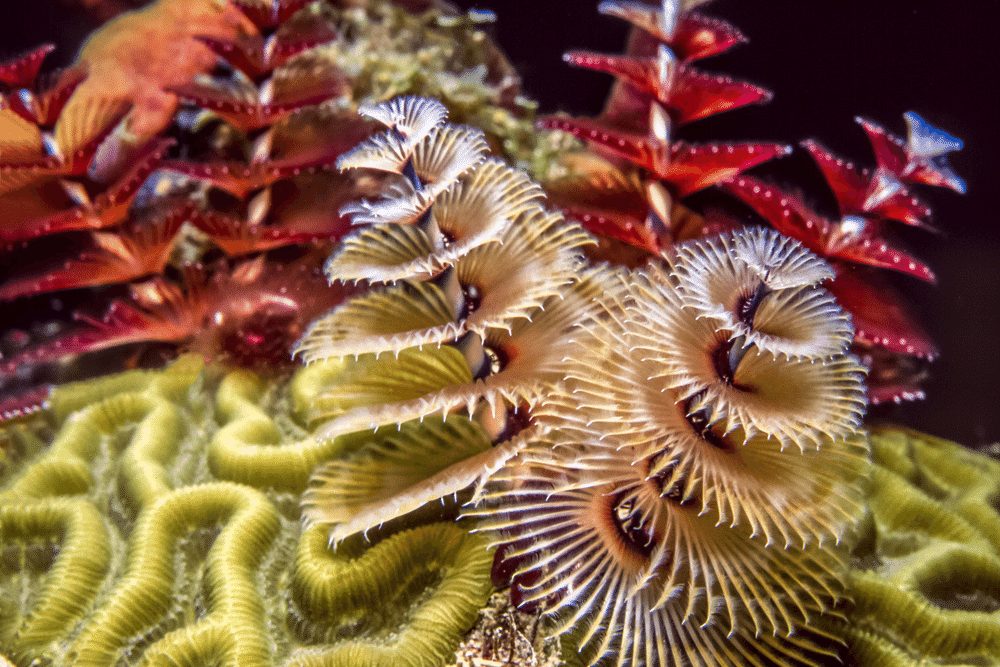
Tubeworms are one of the most beautiful marine animals, with flowers that resemble tentacles, which use a combination of respiratory and feeding mechanisms so that they take in both oxygen and food particles.
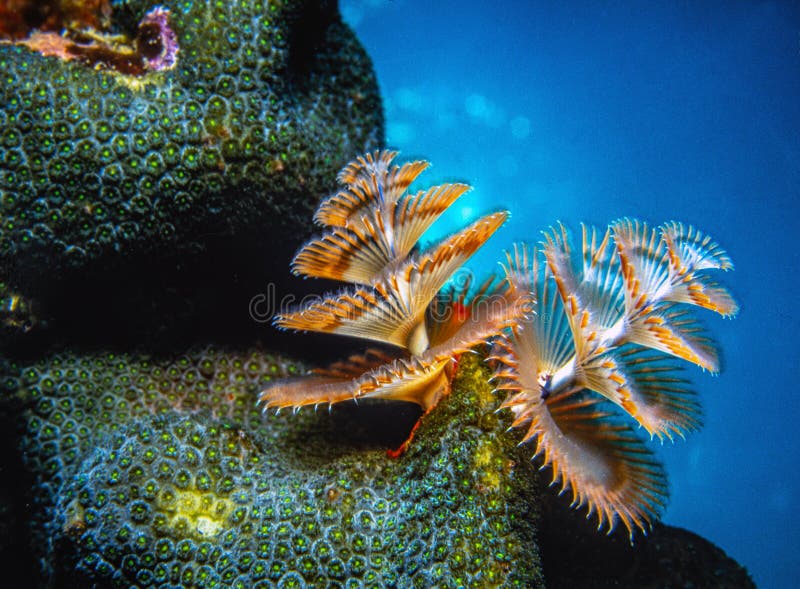
The beautiful spiral Christmas Tree worms that grow from the tip of the coral are used as a defense measure, to hide their elongated gills and curve out towards the entrance of the tube containing limestone spines their sharpness.
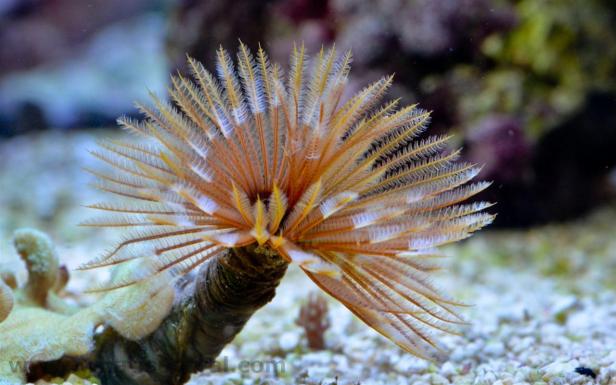
Like all Tubeworms when startled, Christmas Tree Worms quickly retreat into their burrows, hiding from predators. Christmas tree worms come in a variety of bright colors, averaging about 1.5 inches long. However, because of their distinctive shape, beauty and color, they are easily detected by divers in the Indo-Pacific.
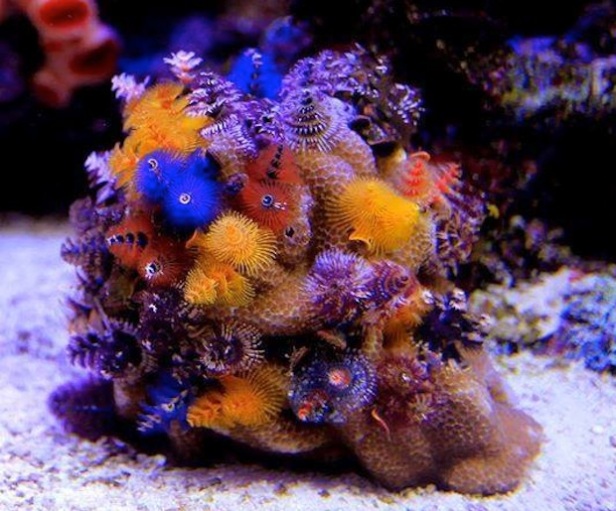
Worms are all around us on the ground, in our pets, but most worms are overlooked and unseen. It’s also not surprising that Christmas Tree Worms appeared in the Disney classic The Little Mermaid, where when the mermaid and fish swim by, they retreat. and any fish keeper knows that this is the defense they use against predators.
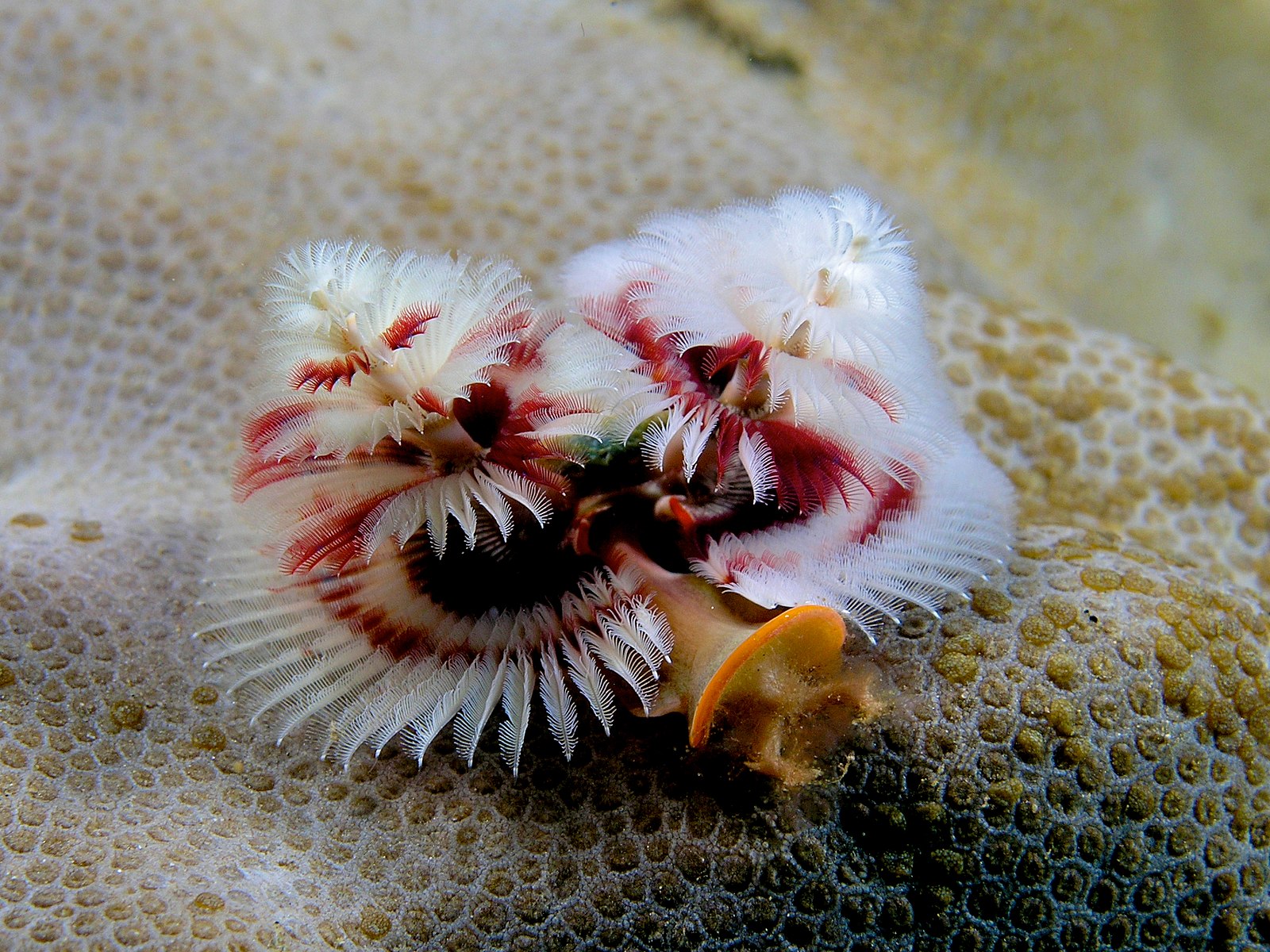
In most cases never threatened by humans, we are therefore deeply concerned about the many marine species that will experience human impacts on the environment and waters around them.

I want to wish you all a Merry Christmas and a Happy New Year. See you all again in 2016.






